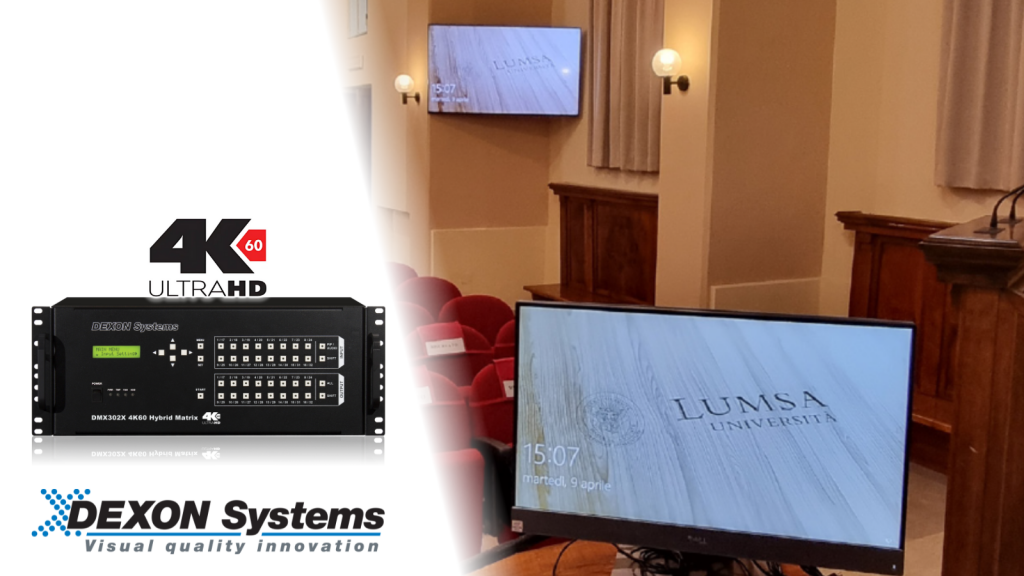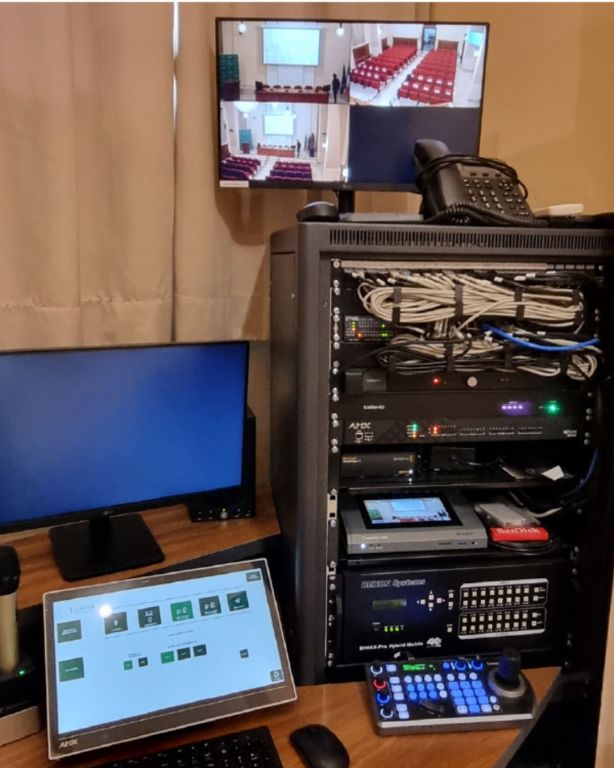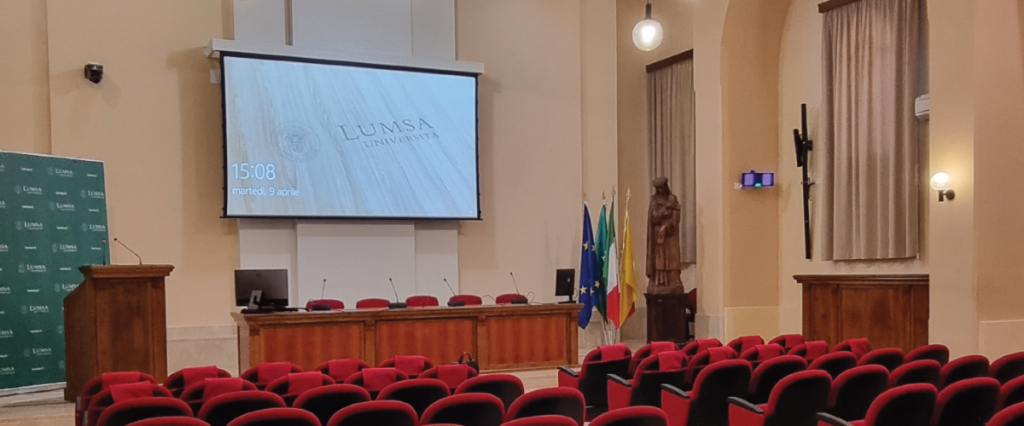LUMSA University, Palermo: A New International Conference Hall
LUMSA University, Palermo:
A New International Conference Hall
LUMSA – with four campuses in Rome and one in Palermo, serving around 10,000 students – is a university rooted in Catholic tradition but now open to students of all cultural and religious backgrounds. Staying true to the vision of founder Luigia Tincani, the university is committed to innovation in both education and technology.
In Palermo, lecture halls are equipped for hybrid, remote, and in-person learning with professional audio-video and broadcast setups. Recently, however, the need arose to renovate the Aula Magna, transforming it into a true international conference center.
We spoke with Vincenzo Lezzi, Head of IT, Telecommunications, and Statistics at LUMSA, and Dario Zanotti, owner of Delta Tecno Studio, the system integrator that carried out the installation.
The Challenge: Upgrading to Attract an International Audience
“At LUMSA we’re constantly evolving our technology, often anticipating trends in ICT and multimedia,” says Lezzi. “The Aula Magna in Palermo had last been updated ten years ago, so a full upgrade was needed—not only to improve image and sound quality but to add simultaneous translation booths and support seamless remote participation."
The Solution: Multi-brand AV Integration Supplied by Exertis
Delta Tecno Studio was tasked with designing and implementing the new system.
“LUMSA gave us clear parameters—especially ease of use and flexibility—leaving it to us to choose the right technologies,” explains Zanotti.

Key features included:
- A microphone system with auto-tracking PTZ cameras
- Translation booths
- Seamless video switching
- HD recording
- Integration with existing videoconferencing systems
- Wireless microphones and amplification
The Aula Magna, about 170 m², was once part of a chapel. Today it features a speaker table with five positions, a podium, and seating for 100 attendees. The core challenge was efficient source management for display.

Vincenzo Lezzi
Head of IT, Telecommunications and Statistics
LUMSA University

Dario Zanotti
Founder and Managing Director
Delta Tecno Studio
Powered by DEXON: The Heart of the System

At the center of it all is the DEXON DMX matrix processor.
“Its killer feature is seamless switching—when you change sources, there’s no disruptive cut; the matrix reprocesses and re-syncs the signal,” says Zanotti. “Each input is scaled, so we don’t even need a separate mixer. The matrix’s dual power supply guarantees stability—critical in international environments where failures are unacceptable.”
Beyond seamless switching, the DMX matrix provides a unified platform for video routing, scaling, and processing. All inputs—whether HDMI, SDI, or DVI—are handled with real-time scaling and format conversion, allowing a wide range of AV signals to coexist without compatibility issues. The processor also supports Picture-in-Picture, video wall management, and fade effects for smooth transitions between content sources.
In this project, the matrix’s modular design proved essential, allowing the integrator to tailor the configuration precisely to the hall’s needs while keeping future expansion in mind. Integrated signal preview, independent audio switching, and a browser-based control interface gave the technical team a high degree of operational flexibility — without introducing unnecessary complexity.
All of this made the DMX matrix a robust backbone for a venue that now supports multilingual conferences, remote learning, and high-profile institutional events, without compromise.
The matrix handles SDI video from three Lumens PTZ cameras, with no converters required. A Yamaha TF1 digital mixer manages 16 channels and integrates with the room’s automation system, allowing control without on-site tech staff. Pre-set scenes also trigger the audio configuration automatically.
Streaming and recording are managed via the Epiphan Pearl Mini, an all-in-one encoder with a touch display and support for SDI, HDMI, XLR, and LAN connections.
Other Key Components
-
Video Distribution: HDBaseT via Cat6 cables
-
Displays: LG 65" (model 65UH7F-H) and LG 24" monitors at the speaker table and control booths
-
Video Output: 3.5-meter screen for projection and secondary displays for remote video feeds
Control: Technicians can route any source to any display from the control room

A Seamless Collaboration
The collaboration between LUMSA, Delta Tecno Studio, and Exertis AV proved extremely successful, resulting in the transformation of a historic Aula Magna into a state-of-the-art international conference hall.
Thanks to its flexibility and reliability, the DEXON matrix played a key role in turning a technically complex space into a modern, easy-to-manage AV hub — ready for hybrid education, international events, and flawless live operation.
Stay updated with the latest AV technology and innovations,
join our newsletter today!
